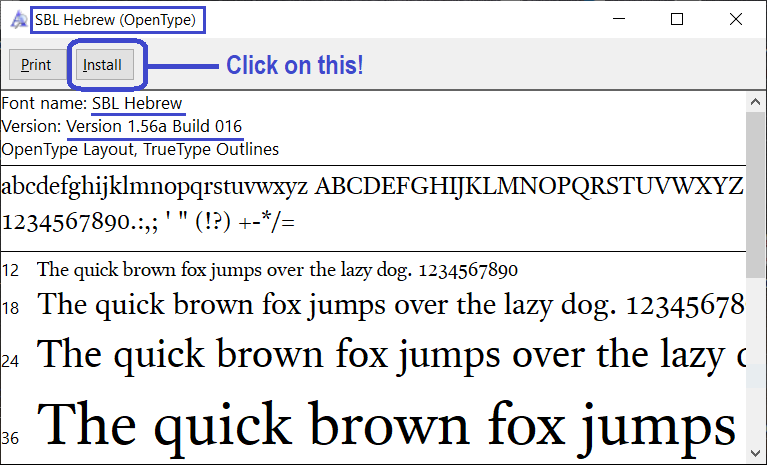|
| ||||||||||||||||||||||||||||||||||||||||||||||||||||||||||||||||||||||||||||||||||||||||||||||||||||||||||||||||||||||||||||||||||||||||||||||||||||||||||||||||||||||||||||||||||||||||||||||||||||||||||
The tables below contain all the Hebrew Consonants with their full names (in Hebrew) and their English transliterations (as used on my webpages), along with the Vowel Points which are most often used in the Hebrew Masoretic Text:
|
| ||||||||||||||||||||||||||||||||||||||||||||||||||||||||||||||||||||||||||||||||||||||||||||||||||||||||||||||||||||||||||||||||||||||||||||||||||||||||||||||||||||||||||||||||||||||||||||||||||||||||||
Note: Since most people do not have a Masoretic Hebrew font installed on their computers, this page was served to you using the webfonts EzraSILW and SBL Hebrew. But I still
recommend installing those Hebrew fonts for use on your computer (for example in documents) by simply downloading the SBL_Hbrw.ttf font and (if in Windows) double-clicking on it and then clicking on the install button which you should see:
In a similar way, you can read all about and download the Ezra SIL Hebrew fonts from here:Ezra SIL Hebrew Fonts.
1[Return to Table] This column (and the one also marked "SHT" under Vowel Points) shows only the cases where many scholarly journals and Hebrew grammar books (such as Weingreen or Barrick; see footnote 4) would differ from my own transliteration scheme. Note: There is no totally agreed upon standard; comparing different grammars or works such as A Student's Vocabulary for Biblical Hebrew and Aramaic, or noting that the SBL has both general and academic transliteration guides, proves this. I believe my scheme is easier for non-scholars to follow.
2[Return
to Table] The dot you see in the middle of this character (בּ) is called a Dāghēsh. This dot most
noticeably affects the pronunciation of the three letters bēyth (בּ); changing it from v to b,
pē (פּ); changing it from f to p, and tāw (תּ); changing
it from th to t. And to a much lesser extent, gimel (גּ), dāleth (דּ)
and kaf (כּ).
If you see a dot inside any letters other than these six, such as the mēm (מ) which appears as מּ in the Genesis 1:2 word hammāyim (הַמָּֽיִם; the heavens), that simply means the letter is to be doubled (mm here). The vowel
point וּ is an exception to these rules (it does not mean וו ww but rather a vowel having
the sound of the oo in the English word shoot).
3[Return to Table] The second character on a line with two Hebrew characters is known as its final form and is only used when it is the last letter in a Hebrew word. The only letters with final forms are kaf (ך or ךּ), mēym (ם), nûn (ן), pē (ף or ףּ) and tsādēy (ץ).
4[Return to Table] For a complete set of all the Hebrew Vowel Points, see our Hebrew Unicode characters page (no pronunciations are given there) and compare that with a Hebrew grammar, such as A Grammar for Biblical Hebrew by William D. Barrick and Irvin A. Busenitz or A Practical Grammar for Classical Hebrew, Second Edition by Jacob Weingreen.